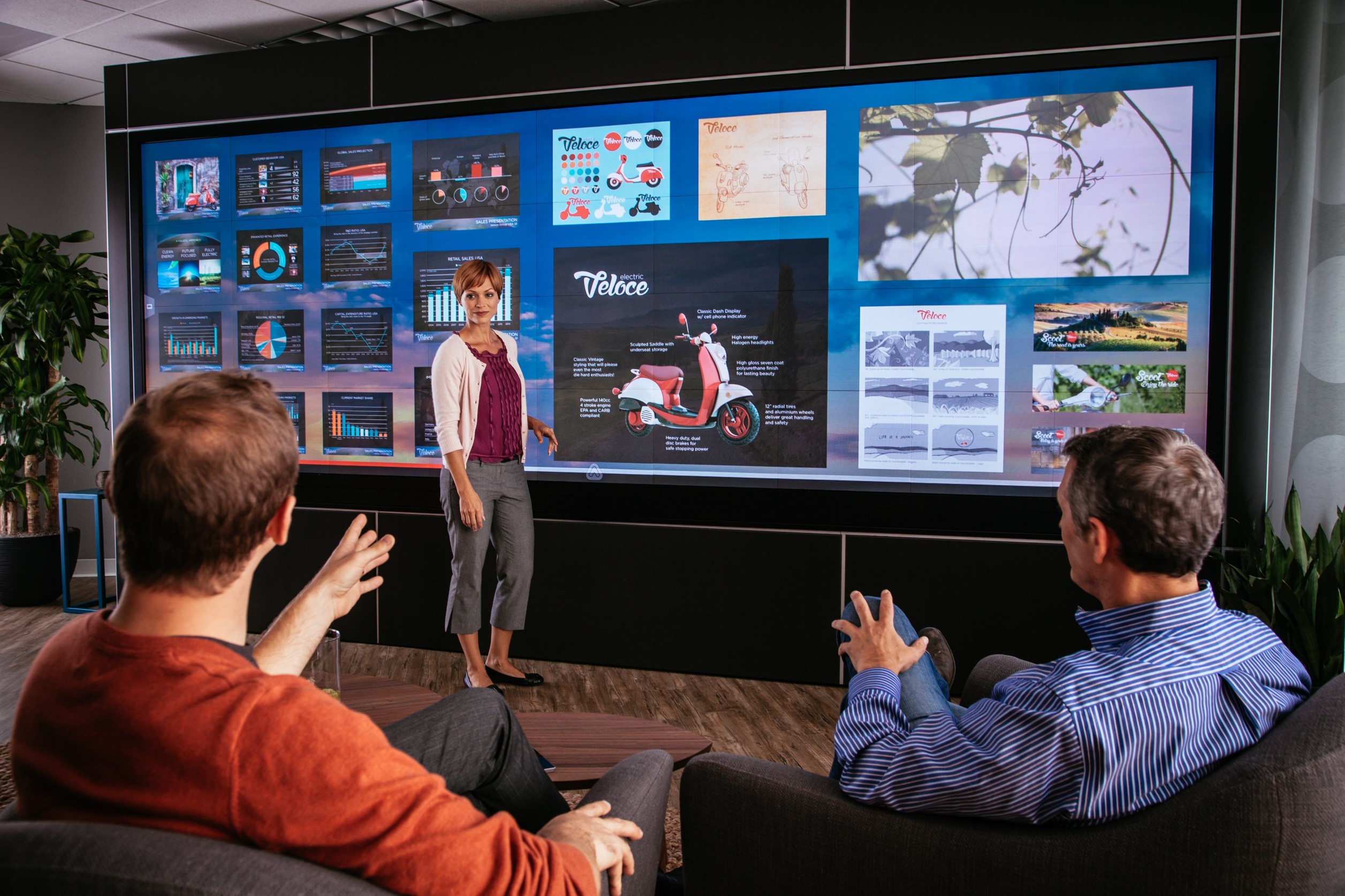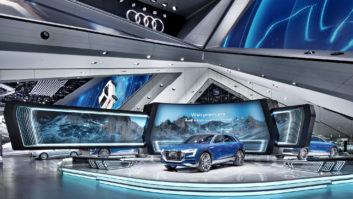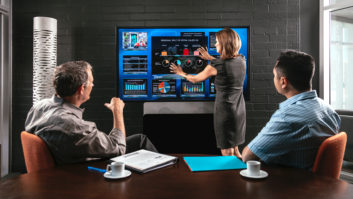
In the first part of our feature on the evolution of 4K, we looked at the fast transition it has made in the pro-AV industry, however the limited infrastructure still presents challenges.
“Along with trying to offer 4K has come the reality and the shock of how difficult and expensive it will be to accomplish,” says Mark Armon, product manager at TV One. “So, instead of ‘4K’, you’re being offered UltraHD – 4K30”.
And there’s the rub. Not all 4K is created equal. But if there is a certain amount of disquiet about the extent to which ‘true’ 4K – or UltraHD – can be implemented, that’s not to say there isn’t progress.
“The appearance of DisplayPort 1.2 support in more display devices has changed things substantially,” believes James Ross Heron, AViary business development director at Green Hippo. “This time last year, we were experiencing a lot of pro-AV equipment accepting 4K via four HDMI ports – which was less than ideal. The ability to daisy-chain multiple monitors together is a promising development too, especially with the limited cable distance that still exists with 4K over DisplayPort. This is of benefit in the installation market.”
And there’s even better news at Crestron, according to the company’s product manager for DigitalMedia, Justin Kennington. “At Crestron, the full 4K infrastructure is already in place – transmitters, receivers, input/output cards, matrix switchers, scalers and cables,” he avers. “Crestron already offers end-to-end 4K distribution systems. We’ve also announced the first and only 4K/60Hz scaler on the market, capable of upscaling to 4K at 60Hz or downscaling from 4K to 2K at 60Hz. We needed to develop our own scaler chip in order to have this capability. We fully expect to remain ahead of our competition for years with this technology.”
Crestron may face competition from Calibre sooner than Kennington thinks, however.
“There’s a general lack of technology at present for us pro-AV manufacturers to base 4K products on,” says Tim Brooksbank, chairman of Calibre, “and what there is tends to be limited in its capabilities or severely compromised. That’s why we’ve developed our own 4K technology from the ground up rather than relying on third-party video processing ASICs as we used to do for HD. Calibre’s HQUltra 4K video processing is one such technology, with initial products launched at InfoComm this June.”
AptoVision has also developed its BlueRiver NT chipset to address the bandwidth issues presented by ‘full’ 4K.
Given, then, that opinions differ as to the state of the art, what advice does the industry have to offer?
No crystal ball
“It’s all a question of selecting the correct infrastructure and ensuring that, wherever possible, what is purchased today will be able to be ‘upgraded’ to support the signal formats of tomorrow,” according to Brian Davies, AMX European technical director. “While I don’t have a crystal ball, I would recommend that in terms of infrastructure, any location that is likely to need 4K signals distributed to it should be served by two Cat6a and two fibre paths. The minimal additional costs of providing this physical wiring during the initial install will offer the maximum flexibility moving forward.”
“Secondly,” he goes on, “the selection of a modular switching solution with inherent bandwidth capabilities that support 4K60 4:4:4 and higher, such as the AMX Enova DGX6400 Digital Media Matrix, mean that, while elements of the distribution solution may need to be replaced in future as new signal formats become available, there should be no need to write off the total investment.”
“The fact is that no other cable can provide true 4K other than fibre,” claims Armon. “4K30 and possibly 4K60 (4:2:0) can be squeezed down a Cat6 cable for a hundred metres, but when it comes time to fire up your 4K60 (4:4:4) system, you will need to pull cable. If an integrator or consultant is truly mindful of the future and of their customer, they have to be using fibre on every new installation. Even if their customer has no interest in any type of 4K today, this small change to an infrastructure actually future-proofs a building. Nobody wants to hear that they need a construction budget when they just want to upgrade their AV system. And, to be honest, IT has been pulling fibre for years.”
“To protect their investment, integrators and users need to be sure that every component that they buy supports H.265 encoded 4K content at 60fps and 10-bit colour depth and HDMI 2.0,” adds BrightSign’s Hastings.
“But,” he continues,” the standards are continuing to evolve. There is an update to the HDMI 2.0 standard, HDMI 2.0a, which allows for 10-bit high dynamic range (HDR) content to be used over the HDMI 2.0 link. This will be a software upgrade for devices that already support HDMI 2.0 at 10 bits.”
As Jeff Hastings, CEO of BrightSign points out, it is a fluid situation – which makes the advice of Digital Projection’s Close particularly noteworthy.
“The best thing anyone can do with any change is to keep an open ear and eye on developments in interfacing technologies such as cabling, connectors, copper, fibre, dedicated video, IT and so on,” he says. “It is the development here that often forces users to replace equipment in order to access new formats.”
AMX by Harman
Brightsign digital signage solutions
Calibre 4K switching
More about Digital Projection
TV One processors
Crestron systems







